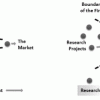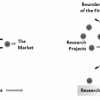Business Transformation Requires Transformational Leaders
Leadership and teaming skills are front and center in times of rapid change. Meet today’s constant disruption head on with expert guidance in leadership, business strategy, transformation, and innovation. Whether the disruption du jour is a digitally-driven upending of traditional business models, the pandemic-driven end to business as usual, or the change-driven challenge of staffing that meets your transformation plans—you’ll be prepared with cutting edge techniques and expert knowledge that enable strategic leadership.
Recently Published
IT Value Creation
A remarkably prescient group of early technology pioneers first conceived the vision underlying modern, Internet-based IT value creation. In a 1945 Atlantic Magazine article, "As We May Think," Vannevar Bush anticipated the interconnectedness and indexing structures of the Web. Later, in 1968, J.C.R.
As we pointed out in Part I of this two-part Executive Report series, some may argue that IT's capacity to contribute to business competitiveness has faded, but we suggest instead that it has evolved and expanded, maturing and changing within a subset of companies that have effectively managed to use IT in various ways. However, it's important to note that not all companies achieve equal success with their mature approaches to IT-based capability and value creation.
Although some may argue that IT's capacity to contribute to business competitiveness has faded, we suggest instead that it has evolved and expanded, maturing and changing within a subset of companies that have effectively managed to use IT in various ways.
Although some may argue that IT's capacity to contribute to business competitiveness has faded, we suggest instead that it has evolved and expanded, maturing and changing within a subset of companies that have effectively managed to use IT in various ways.
As we pointed out in Part I of this two-part Executive Report series, some may argue that IT's capacity to contribute to business competitiveness has faded, but we suggest instead that it has evolved and expanded, maturing and changing within a subset of companies that have effectively managed to use IT in various ways. However, it's important to note that not all companies achieve equal success with their mature approaches to IT-based capability and value creation.
Every year, millions of migrant workers leave their homes, searching for work and career advancement.
The ubiquitous and ever-changing technologies emerging in today's enterprise environment (cloud, social media, mobile devices, etc.) require a new perspective on enterprise security architecture (ESA). Effective enterprise risk management in this highly complex, heterogeneous, and seemingly "boundary-less" environment rests on the three pillars of information security in practice (see Figure 1):
-
Identity management
-
Security policy compliance
-
Cyber security architecture as defense









